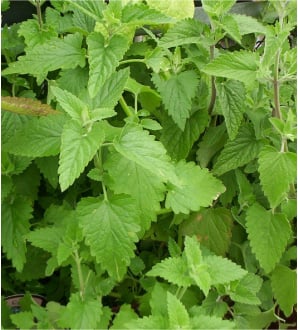
Learning Download: How to Grow Catnip
From Seed to Harvest: A beginner’s guide to growing Catnip.
Catnip has more benefits than satisfying cats. The perennial herb is a member of the mint family and can attract beneficial insects to the garden while keeping pests away. Catnip is an easy-to-care-for herb that spreads quickly and does best along garden beds or as a border. It can also be grown in containers or in hydroponic systems. In addition to its foliage, catnip grows white and lavender flowers and can reach four feet in height. The flower petals are edible and can be used in teas with the catnip leaves or added to salads. Do not eat the entire bloom.
To plant:
Catnip can be planted from seed or transplanted into the herb bed, but if planting from seed there are certain steps to take to ensure germination. Catnip seeds are tough and need to be stratified, which means they need to be slightly damaged before they will sprout. To stratify a catnip seed, freeze the seeds overnight and then leave the seeds to soak in water for 24 hours. After you have stratified the seeds, you can plant them indoors or outdoors. If planting outdoors, plant in rows after the last chance of frost. Catnip seeds can be planted in the spring or the fall.
To grow:
Once catnip sprouts, thin to one plant per 20 inches. Catnip grows best in full sun and only need water if growing in drought conditions. Catnip can become invasive, and to prevent it from reseeding itself, remove the flowers prior to them going to seed. If planted in sandy soil, catnip’s aroma will be stronger.
Catnip has minimal pest issues but can be susceptible to whitefly and spider mites. Catnip also can be susceptible to powdery mildew, so its leaves should be pruned often to increase air circulation, especially in the middle of the plant.
Catnip grows well if planted in front of purple coneflowers, as both plants bloom at approximately the same time during the season. It also is suggested to grow catnip near a vegetable garden, as it will attract cats who will then eliminate the rodent population.
To harvest:
To prevent catnip from reseeding itself, continuously deadhead the flowers on the plant. Catnip leaves can be plucked at any point during their growing season and flowers should be picked just after they open. Pinch off individual leaves and flower blooms or cut entire stems depending on usage. Collect seeds from the flowers to replant if desired, but the catnip will reseed itself in the same spot and return each year.
What catnip craves:
Catnip grows very quickly and does not require fertilizer. Fertilizing catnip can actually damage the potency of its smell and flavor.
Where to buy catnip seeds:
You can find catnip seeds that produce an herb that is ideal for making tea or using to play with a cat at Urban Farmer.

